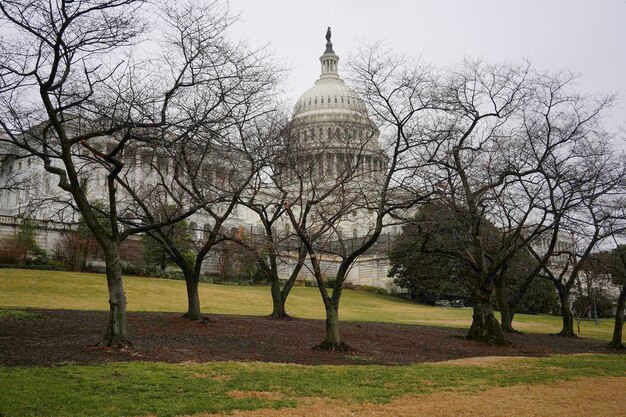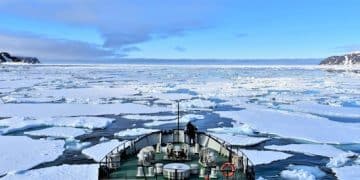The Future of Environmental Regulations: Political Battles Over Climate Change

The Future of Environmental Regulations: Analyzing the Political Battles Over Climate Change Policies involves navigating complex political landscapes, varying governmental approaches, and the integration of technological innovations to achieve effective and sustainable environmental protection.
The urgency of addressing climate change has placed environmental regulations at the forefront of political discourse. The Future of Environmental Regulations: Analyzing the Political Battles Over Climate Change Policies requires a deep understanding of how different political ideologies, economic interests, and international agreements shape the trajectory of environmental protection.
Understanding the Current State of Environmental Regulations
Environmental regulations in the United States are currently at a crossroads, facing both significant advancements and persistent challenges. These regulations, shaped by decades of legislative action and court decisions, aim to protect natural resources, reduce pollution, and mitigate the impacts of climate change. Understanding their current state is crucial for forecasting future directions.
Key Environmental Laws in the US
Several landmark laws form the backbone of environmental protection in the US. Each addresses different aspects of environmental conservation and pollution control.
- Clean Air Act (CAA): Regulates air emissions from stationary and mobile sources to protect public health and the environment.
- Clean Water Act (CWA): Governs the discharge of pollutants into the nation’s waters and sets quality standards for surface waters.
- Endangered Species Act (ESA): Provides a framework for the protection of endangered and threatened species and their habitats.
- National Environmental Policy Act (NEPA): Requires federal agencies to assess the environmental impacts of their proposed actions.
These laws have contributed to significant improvements in air and water quality, species conservation, and environmental awareness. However, their effectiveness is often challenged by political opposition, funding constraints, and evolving environmental threats.
Political Challenges and Regulatory Rollbacks
The implementation and enforcement of environmental regulations are frequently subject to political battles. Changes in presidential administrations and congressional majorities can lead to shifts in environmental policy, including regulatory rollbacks. These rollbacks often target regulations perceived as burdensome to businesses or detrimental to economic growth.

Recent years have seen concerted efforts to weaken or repeal environmental regulations, particularly those related to climate change. These efforts have sparked intense debates and legal challenges, highlighting the deep political divisions surrounding environmental policy.
In conclusion, the current state of environmental regulations in the US is marked by a complex interplay of legislative achievements, political challenges, and regulatory rollbacks. Navigating this landscape requires a comprehensive understanding of the legal framework, the political dynamics, and the evolving environmental threats.
The Role of Climate Change in Shaping Future Regulations
Climate change is increasingly becoming a central driver in shaping the future of environmental regulations. The growing awareness of its impacts, from rising sea levels to extreme weather events, is prompting governments and international bodies to develop more stringent and comprehensive policies. The regulations are increasingly focused on reducing greenhouse gas emissions and promoting sustainable practices.
International Agreements and National Policies
International agreements, such as the Paris Agreement, play a crucial role in setting the stage for national climate policies. These agreements provide a framework for countries to commit to emission reduction targets and collaborate on climate action. However, the effectiveness of these agreements depends on the willingness of individual nations to implement and enforce their commitments.
Many countries, including the US, have developed national policies to address climate change. The policies can range from setting emission standards for industries to investing in renewable energy sources and promoting energy efficiency.
Technological Innovations and Regulatory Frameworks
Technological innovations are also playing a key role in shaping future environmental regulations. The development of renewable energy technologies, such as solar and wind power, is making it possible to reduce reliance on fossil fuels and transition to a cleaner energy system.
- Renewable Energy Standards: Mandate a certain percentage of electricity to come from renewable sources.
- Carbon Pricing Mechanisms: Impose a cost on carbon emissions, incentivizing companies to reduce their carbon footprint.
- Energy Efficiency Standards: Set minimum efficiency requirements for appliances, buildings, and vehicles.
These regulations aim to create a level playing field for clean technologies and drive investment in sustainable practices. They also help to reduce greenhouse gas emissions and mitigate the impacts of climate change.
In conclusion, climate change is a major force shaping the future of environmental regulations. International agreements, national policies, and technological innovations are all playing a role in driving the transition to a more sustainable and climate-resilient economy.
Political Ideologies and Their Impact on Environmental Policies
Political ideologies significantly influence environmental policies in the US, with differing viewpoints shaping the debate over regulations. The influence of political ideologies impacts the scope and stringency of environmental protections.
Conservative versus Liberal Approaches
Conservative and liberal ideologies often clash on environmental issues. Conservatives typically prioritize economic growth and argue for less government intervention, viewing environmental regulations as potential barriers to business and job creation. They may support voluntary measures and market-based solutions, with a focus on cost-benefit analysis.
Liberals, on the other hand, generally advocate for stronger government regulation to protect the environment and public health. They often emphasize the precautionary principle, arguing that action should be taken to prevent environmental harm even in the absence of complete scientific certainty. Liberals also tend to support international agreements and collective action to address global environmental challenges.
The Role of Lobbying and Special Interests
Lobbying by industry groups and special interests can significantly influence environmental policy outcomes. Industries often lobby against regulations that they perceive as costly or burdensome, while environmental organizations advocate for stronger protections. The influence of lobbying can vary depending on the political climate and the balance of power in government.

Public Opinion and Political Will
Public opinion also plays a crucial role in shaping environmental policy. Growing public awareness of environmental issues, such as climate change and pollution, can create political pressure for stronger regulations.
- Grassroots Movements: Activist groups and community organizations can mobilize public support for environmental causes and pressure policymakers to take action.
- Media Coverage: Media coverage of environmental issues can raise public awareness and influence public opinion.
- Electoral Outcomes: Voter preferences can impact election outcomes, leading to changes in government and environmental policy.
Political will, or the lack thereof, can determine whether environmental policies are effectively implemented and enforced. Political leaders who prioritize environmental protection can champion stronger regulations and allocate resources for enforcement, while those who prioritize economic growth may seek to weaken or repeal environmental safeguards.
Political ideologies, lobbying, and public opinion all play a role in shaping environmental policy. Understanding the interplay of these factors is essential for navigating the complex political landscape of environmental regulation.
Economic Impacts and the Cost of Environmental Regulations
The economic impacts of environmental regulations are a subject of ongoing debate. Proponents argue that regulations can stimulate innovation, create jobs, and improve public health, leading to long-term economic benefits. Opponents contend that regulations impose costs on businesses, reduce competitiveness, and hinder economic growth. These debates often shape the political landscape of environmental policy.
Job Creation and Innovation
Environmental regulations can drive innovation and create new industries. Regulations that promote renewable energy, energy efficiency, and pollution control can stimulate demand for clean technologies, leading to job creation in these sectors. These jobs often require specialized skills and contribute to a more sustainable economy.
The development and adoption of new technologies can also lead to productivity gains and cost savings. For example, investments in energy-efficient equipment can reduce energy consumption and lower operating costs for businesses.
Compliance Costs and Competitiveness
Compliance costs are a major concern for businesses subject to environmental regulations. These costs can include investments in pollution control equipment, changes in production processes, and administrative expenses.
- Small Businesses: Small businesses may face higher compliance costs relative to their size, potentially putting them at a disadvantage compared to larger companies.
- Industry-Specific Impacts: Certain industries, such as manufacturing, energy, and transportation, may be more heavily impacted by environmental regulations due to their higher pollution levels.
The economic impact of environmental regulations is complex and multifaceted. While regulations can impose costs on businesses, they can also drive innovation, create jobs, and improve public health. Balancing economic and environmental considerations is essential for developing effective and sustainable environmental policies.
Cost-Benefit Analysis and Policy Design
Cost-benefit analysis is a tool used to evaluate the economic impacts of environmental regulations. It involves comparing the costs of implementing a regulation with the benefits it is expected to generate. The benefits can include reduced pollution, improved public health, and increased ecosystem services.
However, cost-benefit analysis is not without limitations. It can be challenging to quantify all the costs and benefits of a regulation, particularly those that are difficult to measure in monetary terms, such as the value of biodiversity or the impact on future generations.
In conclusion, the economic impacts of environmental regulations are a complex and controversial topic. Understanding the potential costs and benefits is essential for designing policies that are both economically sound and environmentally effective.
The Impact of Public Awareness and Activism
Public awareness and activism play a crucial role in shaping environmental policies and influencing the political battles over climate change regulations. Increased public knowledge about environmental issues and active engagement in grassroots movements can significantly impact policy decisions. Public awareness is growing, leading to increased pressure on governments and corporations to take action.
Raising Awareness through Education and Media
Education and media coverage are key to raising public awareness about environmental issues. Educational programs can teach students about the importance of environmental protection and the impacts of human activities on the planet.
Media coverage, including news reports, documentaries, and social media campaigns, can also play a significant role in shaping public opinion.
Grassroots Movements and Advocacy Groups
Grassroots movements and advocacy groups are essential for mobilizing public support and pressuring policymakers to take action on environmental issues. These groups employ a variety of strategies, including protests, petitions, lobbying, and legal challenges, to advance their agendas.
- Environmental Organizations: Organizations like the Sierra Club, Greenpeace, and the Environmental Defense Fund advocate for stronger environmental protections and engage in litigation to enforce environmental laws.
- Community-Based Groups: Local organizations work on specific environmental issues within their communities, such as air and water pollution, waste management, and conservation of natural resources.
- Youth Activism: Young people are increasingly involved in environmental activism, organizing protests, and advocating for climate action.
Grassroots movements and advocacy groups can be powerful forces for change, influencing policy decisions and holding governments and corporations accountable for their environmental impacts.
Consumer Choices and Corporate Responsibility
Consumer choices and corporate responsibility are also important drivers of environmental change. Consumers can reduce their environmental footprint by making sustainable purchasing decisions, such as buying energy-efficient products, reducing waste, and supporting companies that prioritize environmental sustainability.
Corporations are increasingly recognizing the importance of environmental sustainability and are adopting practices to reduce their environmental impacts. This can include investing in renewable energy, reducing greenhouse gas emissions, and implementing waste reduction programs.
In conclusion, public awareness and activism are critical for shaping environmental policies and influencing the political battles over climate change regulations. Education, media coverage, grassroots movements, consumer choices, and corporate responsibility all play a role in driving the transition toward a more sustainable future.
Future Scenarios and Potential Outcomes
Predicting the future of environmental regulations requires considering various scenarios and potential outcomes. These scenarios depend on factors such as technological advancements, political shifts, and global cooperation. Forecasting these scenarios helps in preparing for different possibilities.
Scenario 1: Continued Political Gridlock
In this scenario, political gridlock continues to stymie progress on environmental regulations. Differing ideologies and special interests prevent the passage of meaningful climate legislation, leading to continued reliance on fossil fuels and slow progress on reducing emissions. Under a continuation of the current political gridlock, the path forward for effective climate action remains uncertain.
The environmental policies are characterized by inaction and delayed response to growing environmental crises.
Scenario 2: Technological Breakthroughs and Market-Based Solutions
In this scenario, technological breakthroughs in renewable energy, carbon capture, and other clean technologies drive a rapid transition to a low-carbon economy. Market-based solutions, such as carbon pricing and emissions trading, incentivize companies to reduce their carbon footprint and invest in sustainable practices.
- Clean Energy Revolution: Rapid deployment of renewable energy technologies, such as solar, wind, and geothermal, leads to a significant reduction in greenhouse gas emissions.
- Carbon Capture and Storage: Widespread adoption of carbon capture and storage technologies allows for the removal of carbon dioxide from the atmosphere.
- Sustainable Agriculture: Farming practices that reduce greenhouse gas emissions, conserve water, and protect biodiversity become more prevalent.
Scenario 3: International Cooperation and Global Governance
In this scenario, international cooperation on climate change strengthens, leading to more ambitious emission reduction targets and increased support for developing countries to transition to clean energy. Global governance mechanisms, such as the Paris Agreement, are strengthened and effectively enforced.
The outcome of the future depends greatly on the level of commitment displayed by nations around the world.
In conclusion, the future of environmental regulations is uncertain, but depends on different scenarios and potential impacts. Technological breakthroughs, political gridlock, and international cooperation all affect the future of our global situation.
| Key Aspects | Brief Description |
|---|---|
| 🌱 Climate Change | Climate change is a major driver shaping future environmental regulations globally. |
| ⚖️ Political Ideologies | Political ideologies significantly influence environmental policies, impacting the scope of regulations. |
| 💰 Economic Impact | Economic impacts of regulations spark debates, with concerns about business costs versus green job creation. |
| 📢 Public Awareness | Public awareness and activism are crucial in shaping policies and influencing climate change regulations. |
FAQ
▼
The primary goals include reducing greenhouse gas emissions, promoting renewable energy adoption, conserving natural resources, and ensuring a sustainable environment for future generations. These objectives aim to mitigate climate change impacts and protect biodiversity.
▼
Political ideologies greatly influence policy-making, with conservatives often favoring less regulation for economic growth, while liberals advocate stronger environmental protections. This ideological divide shapes the stringency and scope of environmental regulations.
▼
International agreements, such as the Paris Agreement, set global standards for climate action and encourage nations to commit to emission reduction targets. These agreements provide a framework for cooperation and help align national policies.
▼
Technological innovations, like renewable energy sources and carbon capture technologies, are essential for developing more effective policies. They offer practical solutions for reducing emissions and promoting sustainable practices, improving environmental outcomes.
▼
Individuals can support stronger regulations by staying informed, advocating for environmentally conscious policies, supporting organizations dedicated to environmental protection, and making sustainable consumer choices. Collective action amplifies the impact on policy-making.
Conclusion
In conclusion, the future of environmental regulations hinges on navigating political battles and leveraging technological advancements to mitigate climate change impacts. By strengthening international cooperation and increasing public awareness, a sustainable balance between economic growth and environmental protection can be achieved.





